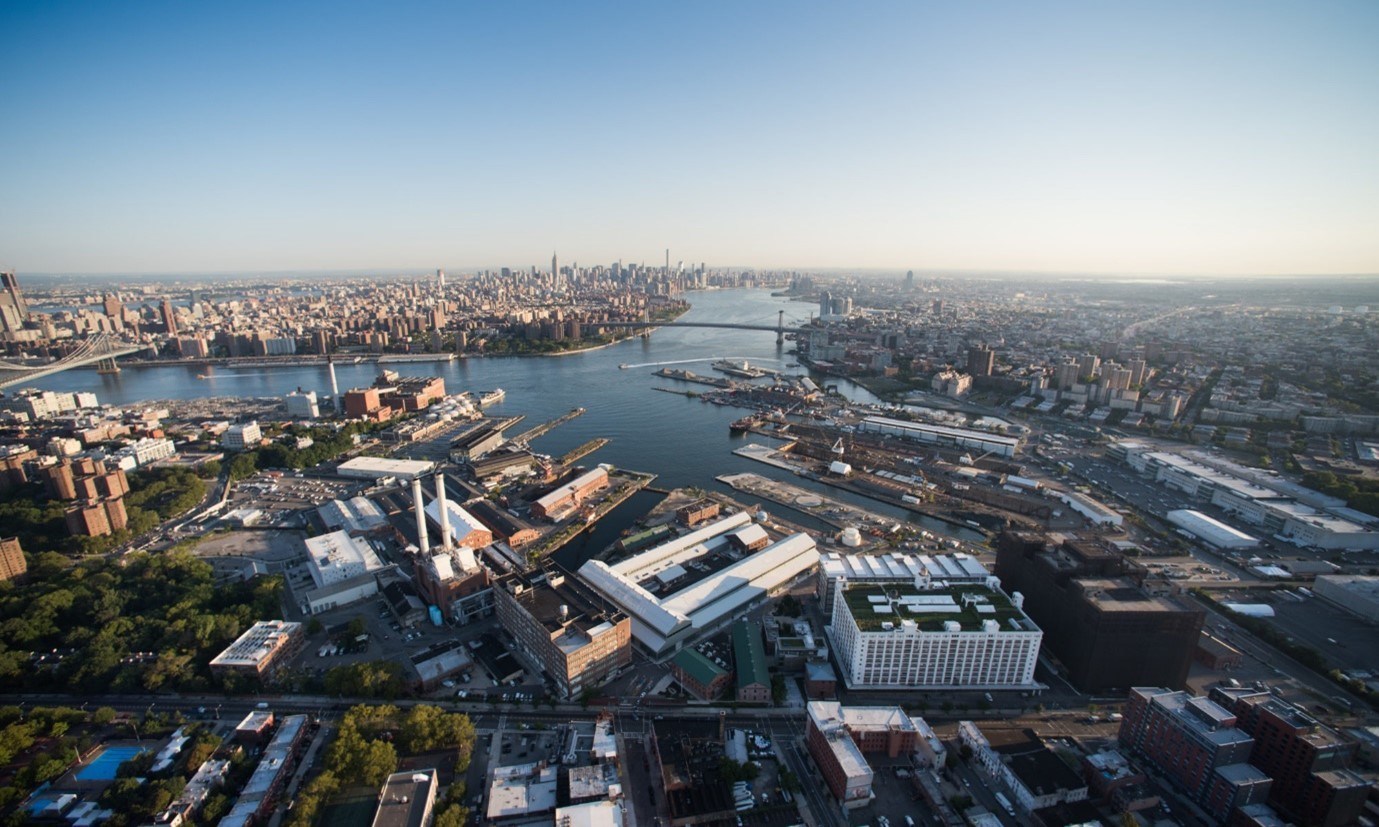
Photo: Brooklyn Navy Yard (Cityzenith)
New York’s 2030 District tackles building emissions with a digital twin
16 September 2021
by Sarah Wray
In partnership with Cityzenith
Digital twins are tipped to save cities US$280 billion by 2030 as well as helping to dramatically reduce emissions, and boost productivity and resilience.

These are attractive prospects but amid an urgent climate crisis and acute financial challenges, cities need to see the proof beyond the projections.
On a recent webinar with Cities Today, Michael Jansen, Founder and CEO of tech company Cityzenith, announced the launch of a pilot project in New York that will demonstrate the concept by helping to manage the carbon footprint of the Navy Yard in Brooklyn through digital twin technology.
Through the global Clean Cities – Clean Future initiative, Cityzenith has pledged to donate its SmartWorldOS digital twin platform to cities at no cost to help them meet their carbon reduction commitments. At least ten are on track to sign up by the end of this year, with New York as the launch city. Cityzenith plans to bring 100 cities on board by 2024 and 300 by 2026.
“Google Earth on steroids”
Jansen described SmartWorldOS as: “A data aggregator, visualiser and analytics platform that allows multiple stakeholders working in a project to collaborate in a common environment, optimising and correlating efficiencies across the entire lifecycle of projects, from design planning to construction, to, ultimately, the ongoing operations of those assets.”
He said it was akin to “SimCity for real cities” or “Google Earth on steroids”.
The initial focus is on buildings as one of the biggest sources of emissions. Cities produce more than 75 percent of global carbon emissions and buildings account for 50-70 percent of those.
A recent report by Ernst & Young found that digital twins can support up to 50 percent savings in energy consumption and expenditures throughout the lifecycle of a building.
Cityzenith is working with non-profit partnership the NYC 2030 District to focus the pilot on the energy footprint of the 225-acre Navy Yard.
Some governments, including New York City, Washington D.C. and the state of California, have begun to set green building mandates and many more are expected to follow as the climate emergency intensifies. But even as building-owners start to deploy smart building management systems and on-site renewable energy, Jansen emphasises the need to adopt a suite of measures if they are to be successful.
Green building retrofits can be costly, risky, and time-consuming and their payback period perceived as too long to persuade some to invest, but digital twin technology can address these issues.
“Of America’s 5.9 million commercial office buildings, fewer than 100,000 are ‘green’, and only 500 are net zero. But change needs simultaneous strategies, including real-time energy monitoring, onsite renewable power generation, and buying carbon offsets,” said Jansen.
“The Navy Yard project will automate these into one easy-use, comprehensive, and accurate solution using digital twin technology’s ability to aggregate, visualise, and analyse 3D (space) + 4D (time) data and correlate efficiencies.”
He said investing US$0.10 per ft² on retrofits unlocks US$3 to US$5 per ft² in savings, with payback in just three to five years.
“The digital twin, to be produced for a group of Navy Yard buildings, systems and infrastructure, will provide the capability to comprehensively monitor building performance and plan energy sustainability and climate resilience projects,” said NYC 2030 District Chairman Haym Gross in a news release.
The project will cover a group of Navy Yard buildings, systems and infrastructure, starting with Bldg.77, a one million ft² warehouse — equivalent to 21 football fields — recently renovated for commercial and manufacturing use.
Jansen said: “The goal here is to show how both new and old buildings in the Navy Yard can deploy these technologies to find different paths to achieve net zero goals.”
Business model
The SmartWorldOS digital twin can be applied to airports, seaports, infrastructure projects, mixed-use commercial developments, university campuses and even the latest crop of greenfield cities being built from the ground up.
Phoenix, Pittsburgh, Dallas, Chicago and Rotterdam could be among the next cities to sign up, according to Jansen.
On how it’s possible to provide the digital twin at no cost to cities, Jansen explained that those who will gain the most direct value, such as commercial companies, will pay small fees from the savings they make. Various pricing models will be explored through the pilots.
Jansen said digital twins can benefit smaller cities as much as large ones.
“No city or institution for that matter has perfect data but most cities have what the basic digital twin ‘stack’ needs,” he commented. This includes geographic information system (GIS) technology and open data.
“What’s as important as the data needs is the use case. You don’t need to have all the data, you need to have all the data around a use case.”








